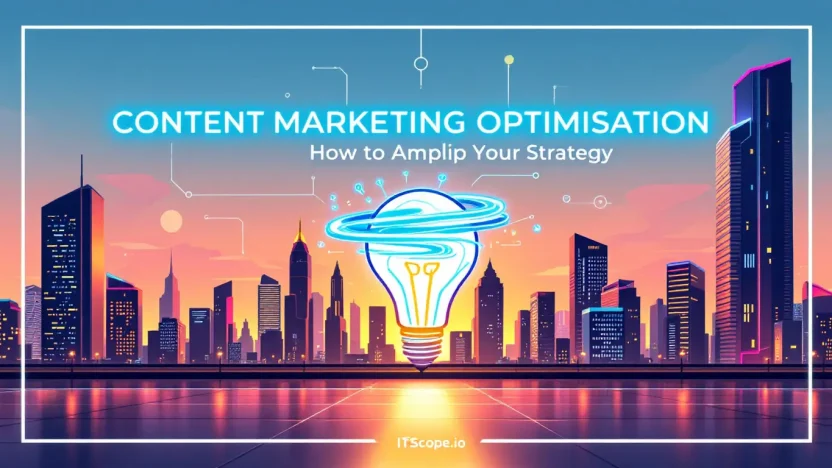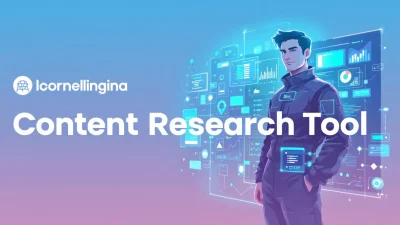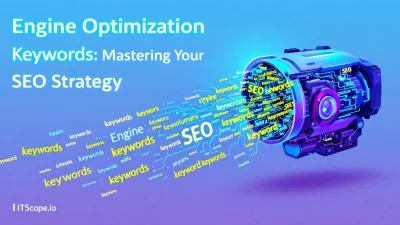In the competitive digital landscape, mastering content marketing optimisation isn’t just an advantage—it’s a necessity. For tech-savvy marketers and IT professionals alike, sharpening this skill can unlock unprecedented marketing power.
Imagine crafting content that doesn’t just speak, but resonates, reaching deep into the hearts of your audience while climbing the peaks of search engine results. In today’s high-paced world, it’s crucial to ensure your strategy not only meets but exceeds the ever-evolving standards of SEO.
Welcome to your ultimate guide—a roadmap designed to elevate your content marketing strategy to new heights. Let’s dive in and unveil the strategic steps necessary to amplify your impact and enhance your reach. Ready to transform your approach? Read on to discover each meticulously tailored step.
Table of Contents
- The Essentials of Content Marketing Optimisation
- Creating Content That Connects
- Leveraging Data for Smarter Strategies
- Optimising for SEO: Best Practices
- Measuring Success and Making Improvements
- FAQs
- Conclusion: Sustain and Evolve
The Essentials of Content Marketing Optimisation
What makes content marketing optimisation so crucial? It’s about refining your strategies to boost engagement and drive results. In this how-to guide, we’ll unpack the essentials of elevating your SEO and content marketing efforts for success.
- Understand Your Audience: Crafting content that resonates begins with knowing who you’re speaking to. Develop personas that reflect your target audience’s age, interests, and behaviors. Tailoring your messaging to these insights is critical for effective content optimization strategy.
- Utilize SEO Tools: Employ SEO tools to identify keywords relevant to your niche. This helps gain visibility among your target audience. Tools like SEMrush and Ahrefs provide invaluable insights into keyword volume and competition, essential for web content optimisation.
- Create High-Quality Content: Prioritize quality in your text, images, and media. Quality content drives traffic, encourages engagement, and leads to higher conversion rates. Remember, high-quality information paired with engaging storytelling makes your message memorable.
- Optimize for Mobile Devices: Considering that a significant portion of web traffic is mobile-based, your content should be mobile-friendly. Ensure fast loading times and user-friendly navigation to enhance the user experience.
- Measure and Adjust: Monitor your content’s performance using analytics. Metrics such as bounce rate, time on page, and conversion rates will inform adjustments to your strategy. Regularly updating your approach guarantees sustained success. Dive deep into how to optimize different types of content for the best results.
Key benefit of using content marketing optimisation.
By focusing on these essentials, you enhance your ability to engage your audience effectively. Adapt these strategies consistently to stay ahead in the ever-evolving landscape of digital marketing.
Creating Content That Connects
In the vast sea of digital content, how can your message stand out and truly resonate with your audience? The secret lies in content marketing optimisation. Let’s explore practical steps to craft impactful content that not only captures attention but also fuels engagement and drives conversions.
- Understand Your Audience: First and foremost, dive deep into knowing your target demographic. Use tools like surveys or audience analysis platforms to gather insights. What problems are they facing? How can your content provide solutions? When you align content creation with audience needs, your message hits closer to home.
- Focus on Storytelling: Stories are where the heart is. Incorporate relatable anecdotes or hypothetical scenarios to weave narratives that captivate. For instance, consider a situation where your product helped a customer overcome a common challenge your audience might face.
- Use Engaging Visuals: Remember, a picture is worth a thousand words. Compliment your text with engaging, high-quality visuals, infographics, or videos. These not only enhance the user experience but also aid in web content optimisation by reducing bounce rates.
- Craft Compelling Headlines: Your headline is often the first impression. Make it count by ensuring it’s intriguing and keyword-rich. A good headline sets the stage for your content marketing journey.
- Optimise for SEO: Lastly, ensure all content elements like keywords, meta descriptions, and alt texts are optimized. Leveraging SEO best practices ensures your content is discoverable for those seeking your insights.
“Without a strategy, content is just stuff, and the world has enough stuff.”
For a more comprehensive understanding, check out this content optimization guide. You’ll find strategic gems to further fine-tune your efforts.
Next Steps in Content Optimization
After crafting stellar content, it’s crucial to have a solid content optimization strategy to ensure continuous improvement. For deeper insights, visit here and here to further optimize and amplify your strategy.
By following these guidelines, your content won’t just be informative but transformative, driving real engagement and conversion.
Leveraging Data for Smarter Strategies
In the world of content marketing optimisation, data is a goldmine waiting to be tapped. But how exactly can you harness it to enhance your content optimization strategy? Let’s dig into some concise, actionable steps that will set you on the right path.
1. Analyze Current Performance
Start by assessing your current web content optimisation results. Utilize tools like Google Analytics or SEMrush to identify areas of success and aspects needing improvement. Observe your traffic sources, bounce rates, and conversion metrics.
- Set Benchmarks: Establish clear objectives based on historical data to provide a reference point.
- Spot Patterns: Recognize trends in user behavior to tailor content accordingly.
2. Identify Audience Needs
Understanding your audience is foundational in effective content marketing. Leverage demographic and psychographic data to tailor your content, ensuring it resonates.
- Feedback and Surveys: Use direct feedback to gauge interests and issues.
- Keyword Research: Conduct thorough research to align content with audience queries.
3. Optimize Content Continually
Content optimization is an ongoing process. Regularly update content to match evolving trends and search algorithms. A/B testing different headlines and formats could significantly boost engagement.
Key benefit of using content marketing optimisation: craft content that evolves with your audience and search engines.
Integrating these strategies will not only transform your approach to web content optimisation but also drive consistent improvements in performance, audience engagement, and ROI.
Remember, the smarter you leverage your data, the more effective your content marketing optimisation strategy becomes.
Optimising for SEO: Best Practices
Is your content marketing optimisation strategy delivering results? Let’s dive into best practices that can magnify your efforts. With a robust content optimization strategy, you can appeal to search engines and your audience alike, driving meaningful traffic to your site.
- Identify Relevant Keywords: Start by researching keywords that resonate with your audience. Use tools like WordStream for efficient keyword discovery. Remember, keywords should flow naturally, enhancing the readability.
- Optimize Title and Meta Descriptions: These elements act as your first impression with potential visitors. Ensure they are crafted to entice clicks while embedding primary keywords like “content marketing optimisation.”
- Utilize Internal and External Links: Create a network of linkages to deepen the reader’s knowledge. For example, our guide provides extensive insights into SEO and content marketing. External links to authoritative sites, like Content Marketing Institute, enhance credibility.
- Ensure Mobile-Friendliness: As user habits evolve, adapting your site for mobile access becomes crucial. Fast-loading, responsive designs improve user experience and web content optimisation.
- Enhance Readability: Break down your content using headers, bullet points, and short paragraphs. This structure not only improves readability but aligns with SEO best practices, giving your strategy a competitive edge.
A successful content optimization strategy requires careful planning and consistent updates. By integrating these best practices, focus on delivering relevant, engaging, and valuable content to your audience while fulfilling search engine requirements. For more insights, don’t miss out on the detailed guide by SEMrush.
Proper optimisation is the key to amplifying your content marketing efforts, ensuring your strategy thrives in a saturated digital landscape.
Measuring Success and Making Improvements
Effective content marketing optimisation isn’t just about implementing strategies; it’s about knowing what works and refining your approach accordingly. So, how do you measure success? Let’s explore practical steps you can take to assess and enhance your strategy.
- Set Clear Objectives: Before you can measure success, you need specific goals. Are you aiming to boost traffic, increase conversions, or expand your audience? Clear objectives guide your evaluation process.
- Utilize Analytics: Tools like Google Analytics provide vital insights into your website content optimisation efforts. Track metrics such as bounce rates, time on page, and conversion rates to gauge performance.
- Conduct A/B Testing: Experimentation is key in improving your content optimization strategy. Split tests help you identify which elements resonate with your audience, empowering data-driven decisions.
- Gather Feedback: Collecting feedback from your audience offers qualitative insights. Use surveys or direct engagement to understand user preferences and refine your content accordingly.
Iterative Improvement Process
No strategy is flawless from the start. Embrace an iterative process by making incremental changes based on your findings. Continuous improvements ensure that your content optimization strategy aligns with evolving trends and user expectations.
| Metric | Initial Value | Improved Value |
|---|---|---|
| Web Traffic | 5,000 visits/month | 7,500 visits/month |
| Conversion Rate | 2.5% | 3.5% |
By systematically assessing these aspects, you not only enhance content marketing optimisation but also push your digital strategy to new heights. For deeper insights, explore our comprehensive guide on content optimization. Remember, the goal is continuous learning and improvement. Harness the power of feedback and analytics to drive impactful changes in your approach, and watch your content thrive.
FAQs
What is content marketing optimisation?
Content marketing optimisation involves refining your content to increase its effectiveness, ensuring it resonates with your target audience and aligns with SEO principles. Learn more about how it can boost your digital efforts here.
How can I build a successful content optimization strategy?
Start by analyzing your audience’s needs, select the right keywords, and create engaging, valuable content. Utilize tools to monitor performance and adjust your strategies accordingly. Check this guide for detailed insights.
Why is web content optimisation essential?
Web content optimisation maximizes visibility on search engines, driving traffic and improving engagement. Without it, your content might get lost in the vast digital space. Discover key types of optimization here.
How often should I review my content optimization strategy?
Regular review, ideally every quarter, ensures your strategy adapts to changing trends and insights. This keeps your content relevant and effective.
Can a content optimization strategy improve search engine rankings?
Indeed, a well-executed content optimization strategy can significantly enhance search engine rankings by aligning with algorithm preferences and user intent. Discover more content tips here.
Conclusion: Sustain and Evolve
Congratulations! You’ve mastered the essentials of content marketing optimisation. But remember, in the digital world, stagnation leads to invisibility.
To sustain and improve your content optimization strategy, continuous adaptation is crucial. Keeping up with the latest trends and technologies will help reinforce the foundation of all your initiatives.
Ongoing Strategy Improvements
1. Monitor and Measure: Use analytics tools to track performance and refine your content marketing optimization strategies. Pay close attention to key metrics reflecting engagement and conversion rates.
2. Engage with Updates: Follow industry updates to see what’s working and what can be innovated. Diversify your approach based on data-driven insights.
3. Refresh Content: Rejuvenate existing content by incorporating trending keywords and refining web content optimisation. Regular updates maintain relevance and engagement.
Remember: The key to successful content marketing optimisation lies in perpetual learning and flexibility.
For more insights on mastering digital success, explore our comprehensive guide on SEO and Content Marketing.
In this dynamic field, embracing change not only enhances visibility but also drives sustained growth. Keep evolving, and your efforts in content marketing optimisation will indeed amplify your strategy!



